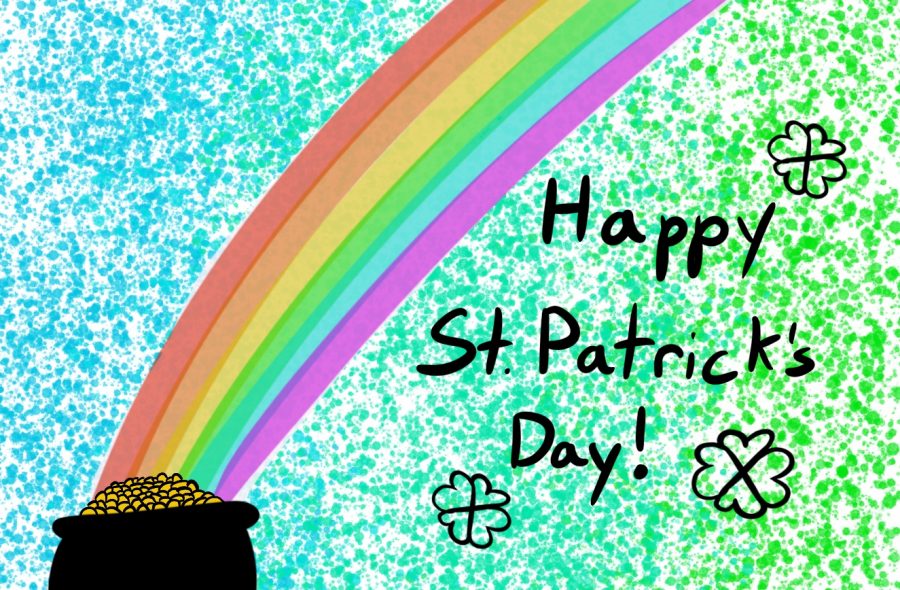The colorful history of St Patrick’s Day
St. Patrick’s Day has been celebrated for many years within the United States. It is a day of joyful celebration, full of exciting events and full-on green everywhere, yet the history of how it came to be may hold information many do not even realize.
March 17, 2021
In Ireland, this well known day used to be a much more holy day. The day is set on March 17 to commemorate the passing of the missionary responsible for spreading Christianity to Ireland. Though there is not much background information on St. Patrick himself, it is known that he was not Irish and the color associated with him had been blue, not green. It was not until the 1798 Irish rebellion that green started becoming the associated color with this day.
Because this day is meant to be more holy than a mere holiday, Ireland spent the majority of past celebrations viewing this day as one of solemnity. The morning portion of the day was spent at church with modest feasts set for later in the day. In fact, it was not until television arrived in Ireland that the festive portion of the day began to appear when they took notice of how the day was being celebrated in the United States. It is even said that the parades and celebrations in St. Paul were much bigger than those in Ireland, yet in recent years — before the pandemic — celebrations there have grown as tourists head to Ireland for the occasion.
There has been some dispute over where the very first St. Patrick’s Day celebration occurred. Boston is one of the places that claims to have had the first known celebration and it is where on March 17, 1737, many Presbyterians — known to have arrived from the north of Ireland — had come together in honor of St. Patrick and had also formed the Charitable Irish Society whose mission was to provide aid to struggling Irishmen within the city. It is the oldest Irish organization in North America and to this day is known for conducting an annual St. Patrick’s Day dinner.
During their time of immigration into the United States, Irish Catholics were treated very unfairly, particularly after the failure of their potato crops in 1845 when many Irish Catholics arrived in the United States. They were harassed quite a bit, especially by the political group of the time who were called the ‘Know-Nothings.’ This group had been known for being Anti-Catholic, Anti-Irish and Anti-Immigration. They were recognized as spreading a xenophobic movement throughout the country. As a show of defiance in the face of inequality, the Irish used St. Patrick’s Day to present their pride and strength by partaking in parades and festivities. It was not until thousands of Irish soldiers joined the fight in the Civil War that they began to take on a different light.
As time progressed and the Irish began to embrace the American culture, even those with no Celtic blood began taking part in the St. Patrick’s Day celebrations.

